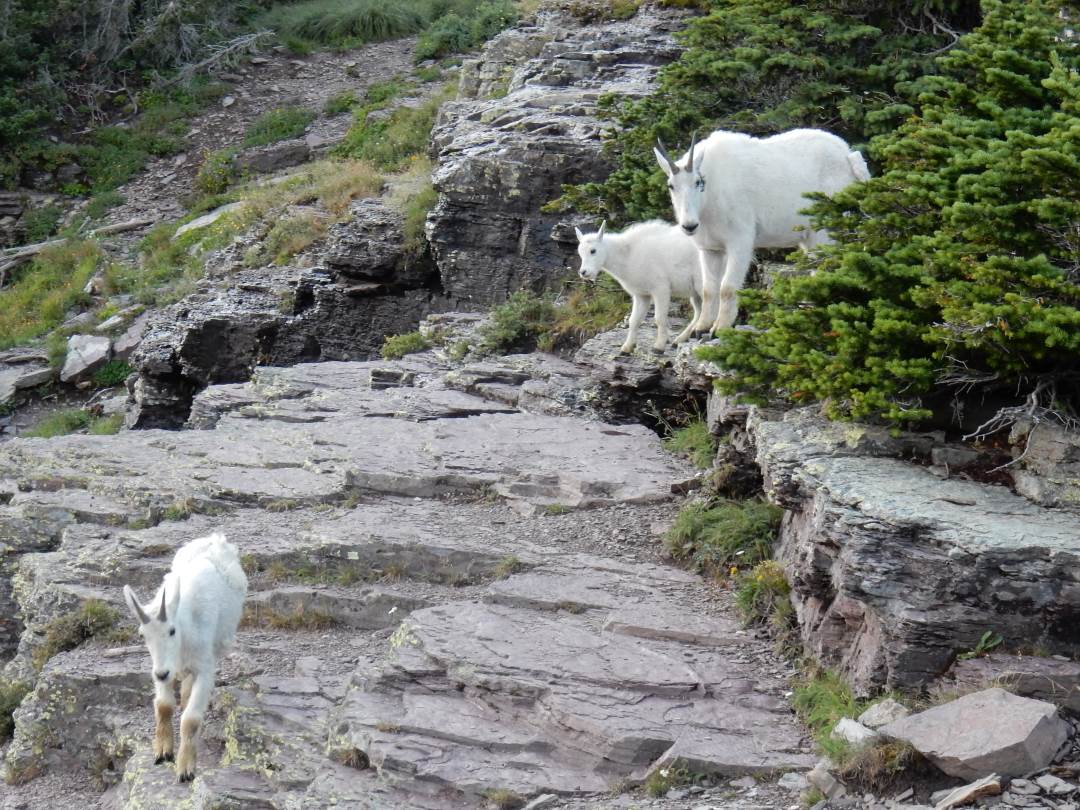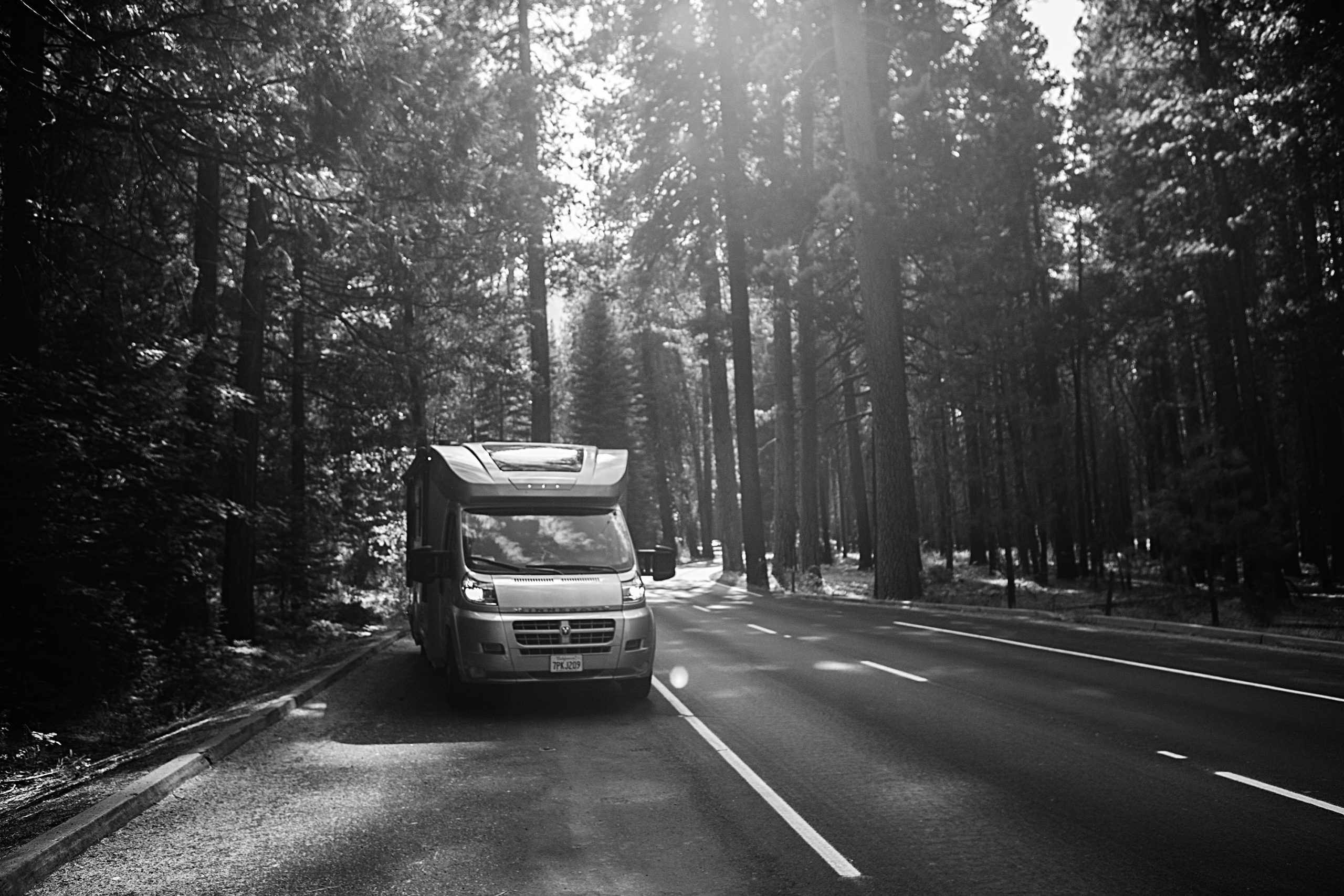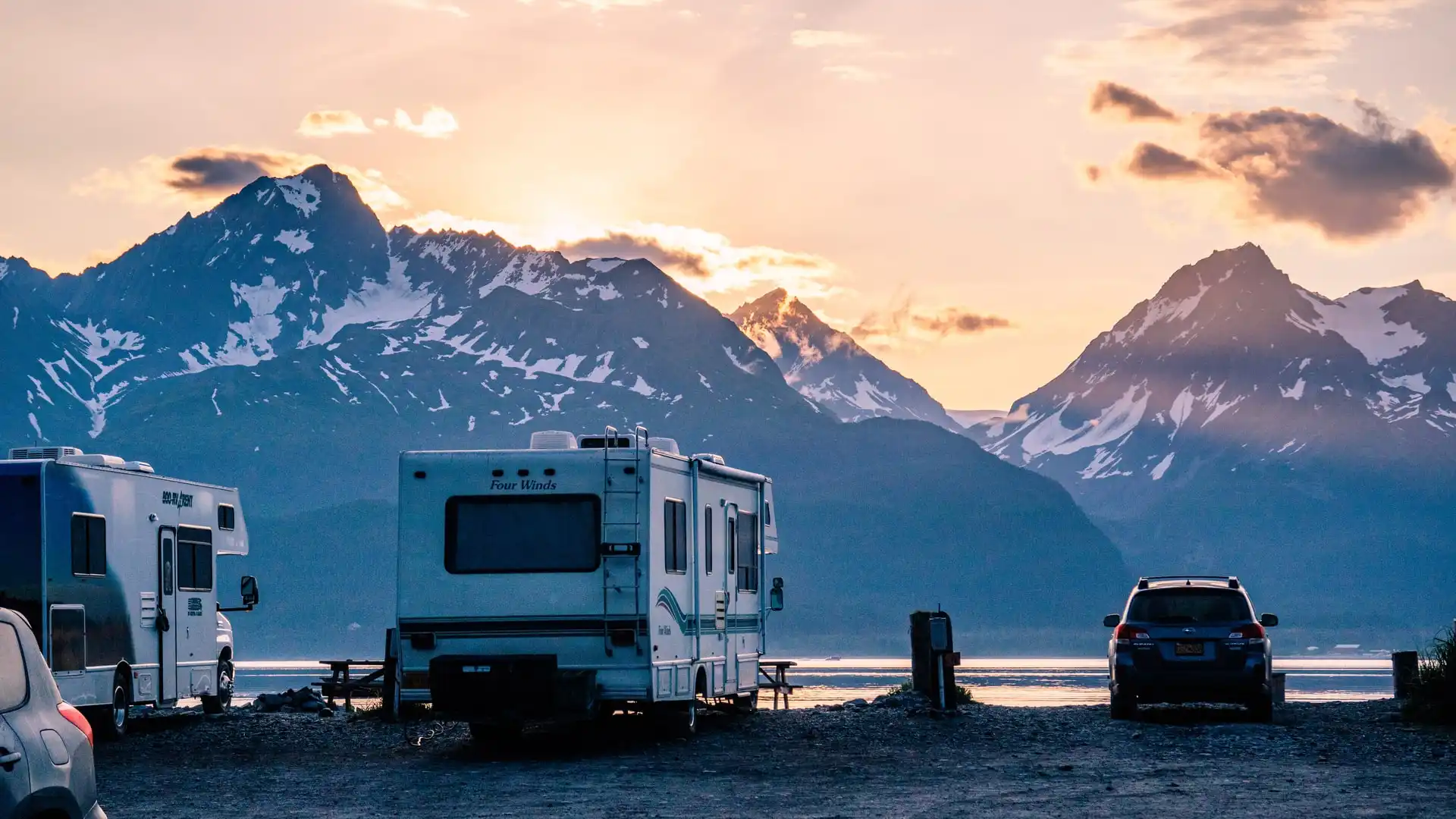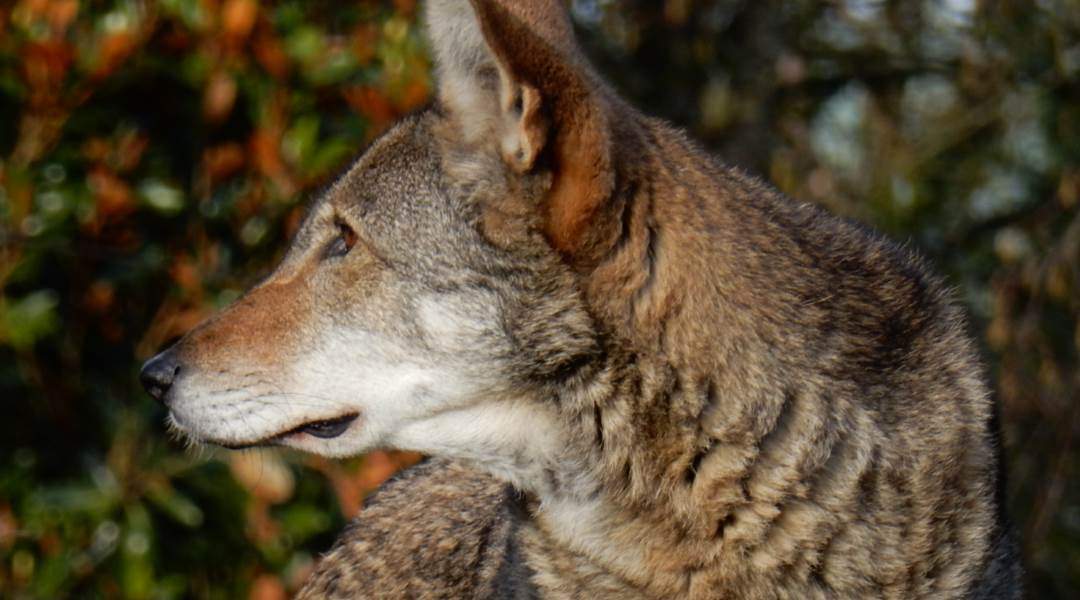One of the most exciting aspects of exploring the wild places of North America (like National Parks or remote destinations) is observing wild animals in their natural habitat. The thrill of an unexpected animal encounter is hard to match. While hiking in Badlands National Park my wife and I came face to face with a bachelor herd of wild Rams. The weariness of a long hike instantly melted away, our hearts raced, and our spirits soared.
At the same time, we knew this situation had an element of danger. If we spooked the Rams they could well be very dangerous. The lead Ram gave us a warning signal when he first saw us, and we heeded that by quietly backing away from the group until he resumed feeding. Choosing the right initial reaction is one of the skills you want to learn to keep a magical experience from turning into a dangerous one.
Is the danger real?
Yes, but don’t let that scare you away from wild places. The truth is that the number of wild animal attacks on humans is very low. Most injuries and deaths from animals in America are from pets and livestock, not wild animals. Only a tiny percentage of people exploring the wilds are injured by wild animals. Of those few, most of those are due to foolish choices. If you respect nature, your risk is very low. We want you to stay safe while out on your Ourdoorsy adventures, so we’ve prepared this information to keep you out of trouble.
Research and preparation
Do some research on the areas you are traveling to before you roll out. If you are headed to a national or state park, visit their website and look for safety information. Typically, it will be listed under a heading like “Plan your visit.” They will tell you all the general and specific safety hazards you could encounter in the park, and what you can do to minimize your risk. They won’t take long to read, and they could save your life. If you are headed to a wilderness area that is not managed in some way, just spend some time Googling the name of the area and the word “safety.”
When you do arrive at your destination, keep an eye out for posted safety information and take it seriously. If you are at a park, be sure to swing by the visitor’s station and check out the safety information they have available there. Different seasons pose different risks both from wildlife and from the environment itself. Finally, if there is a ranger present, ask them if there is anything, in particular, to look out for and they will have good information for you.
If a park recommends you carry specific safety equipment like Bear Spray, I recommend trying to get that in advance of your trip. There is no guarantee you will find it at or near your destination. You also want to read all the instructions for any safety equipment you carry with you. It won’t do you any good if you are not well versed in how to make the best use of it.

Universal rules
No matter what kind of wildlife you are going to encounter, there are a few safety rules that are pretty much universal. These will go a long way in keeping you safe when encountering wild animals.
Be aware of your surroundings
Between the scenery and conversation with your travel partners, it’s easy to get distracted and stop paying attention to where your feet are taking you. Watch where you are walking. This is your number one tip for avoiding dangerous contact with snakes, insects, and other small critters. If you are in a place where such animals are known to be present, don’t put your hands or feet into any location you can’t clearly see.
If the area is known to have dangerous animals, keep an eye out for both them and any signs of them such as fresh footprints or droppings. Encounters with wildlife are great, surprise encounters with wildlife are less so. Keeping the animals in mind will help you both avoid a potentially dangerous encounter. Good awareness also ensures you don’t miss any golden opportunities to observe the wildlife.
Don’t feed the wildlife
Feeding wild animals ranks high on the list of mistakes that get people in trouble. Animals are highly motivated by food. It will make them get much closer to you, and that puts you and them in greater danger. If they become spooked at close range, that can lead to an attack. Food can lead the animal to become aggressive in trying to get more food. Even if you don’t get hurt, it encourages the wildlife to approach other people which could place them in danger. Accidental feeding can be just as bad as doing it on purpose. Leaving food unprotected and unatended at a campsite is a bad idea.
Keep your distance
As a general rule, the bigger and faster an animal is, the more distance you want to keep between you and them. Every wild animal is potentially dangerous. It isn’t just big predators that can kill you. Wild boar, deer, moose, and other herbivores can be just as dangerous as a cougar or bear. Don’t try to find out how close you can get to the animals. Don’t ever try to touch a wild animal. To get a close look at wildlife, travel with a set of binoculars or a camera with a good optical zoom.
Also, don’t assume an injured animal is not dangerous. They could well be more dangerous. If you find an injured animal, the only way you can possibly help them is to contact a park authority and report it to them. Do not attempt to help the animal. You are not likely to do it any good and are far more likely to do yourself harm.

Don’t be too quiet
Most wild animals will do their best to avoid humans. If you are in an area where large predators or aggressive herbivores are a risk, you want to make enough noise that they will be alerted to your presence. Try to balance this with the desire of other hikers to enjoy the quiet solitude of nature. Conversational voices, soft whistling, singing, or even just the crunch of feet on the undergrowth can be enough to alert animals of your presence. A small bell or chime can also work. The worse the visibility is, the more sense it makes to ensure you are making some noise to alert the wildlife.
Obviously, if you are hunting or trying to capture photos of elusive wildlife, you have a reason to try and remain silent. Fortunately, if this is the case, you are also trying to be extra aware of your surroundings and to keep an eye out for critters. Just make sure you are aware of what your strategy is for not being on the wrong side of a surprise encounter!
Fight or flight?
If you do find yourself too close for comfort, or faced with an animal displaying aggressive behavior, making the right move goes a long way to keeping you safe. Here, it pays to really know the behavior of the animals you are likely to encounter in an area. Take these recommendations with a grain of salt, as they are generalized for common animals in North America. Breeding season, injury, and other factors can dramatically change the behavior of any given animal.
Insects
With the exception of mosquitoes, most dangerous insects only bite when you come into direct contact with them by accident. They key here is to not come into contact with them. Avoid putting your unprotected hands or feet into bushes or brush where insects can be commonly found. If you agitate a group of bees or hornets, try to get as far away from their source as quickly as you can safely manage. Tripping and injuring yourself while getting away is not going to help you.
Good protective clothing is your best defense against most biting or stinging insects. Also, when you come home from a trip, it’s a good idea to check your clothing and body for any unwanted hitchhikers like fleas or ticks.
Snakes
Snakes are only interested in defending themselves from attack. Backing away quickly is your best bet. To avoid startling them, watch where you are walking and try to stick to open terrain. Avoid brush or rocky crevices where they like to hide.
Large herbivores
Don’t assume that only meat eaters pose a danger. Herbivores like deer or buffalo have to defend themselves from aggressive predators. They can and will attack people when sufficiently threatened. Males are especially aggressive during breeding season, and females are very aggressive when protecting their young. Because their instincts are largely defensive, you want to back away from them if they show any aggressive behavior. Give them sufficient space and you should be largely safe. If you are charged, try to run for cover behind a tree rock or other obstacle that will prevent a straight charge.

Big cats
America’s wild cats generally try to stay as far away from people as possible but they can pose some danger. If you find a cat behaving aggressively towards you, or stalking you, the best strategy is to frighten them by making noise and waving your arms around. Running from a cat or turning your back on them can trigger their hunting instincts and increases your danger. This is one of the only wild animals of North America were backing away slowly is not a good strategy. Animal spray or a gun can be effective if they attack you outright. In a worst case scenario, fight back as best you can manage.
Bears
Bears are a bit tricky, in that they have a wide range of behaviors and motivations when encountering humans and humans have no chance of overpowering or outrunning them. It’s a good idea to be noisy and to make yourself look big by raising your arms while backing away slowly. You are trying to send the message “I’m not threatening you, but I am dangerous.” If you have bear spray or a gun, you should get that ready to use if the bear approaches you. If worst comes to worst and a bear attacks you, your best hope to survive is to curl into a ball to try and avoid a fatal injury.
Wolves
While wolves are undeniably frightening, attacks by wolves on humans are incredibly rare. They tend to be very shy of humans. When encountered they are largely defensive and will rarely attack. If in the rare instance you do find yourself face to face with a wolf, the best thing to do is look dangerous and back away slowly. Thrown rocks or sticks can be a good discouragement. Both spray and guns can be an effective defense if attacked. Unlike bears, you have some hope of fighting one off.
Alligators
Provided you stay out of shallow water in alligator territory, your chances of an alligator surprising you are pretty low. Like most animals, if this does happen, back away slowly and calmly. If an alligator charges you, you can easily outrun them on land. In the water you are pretty much at their mercy, so avoid swimming with alligators whenever you can. Attacks are very rare, but they can be unpredictable animals and they have little fear of humans.

Stay safe and have fun
Remember, if you follow simple rules for safety, and keep yourself informed of potential dangers, your chances of being injured by wildlife is very remote. Getting outdoors and observing the wild thing of the world is something everyone should get the chance to experience.
Get started on your wild animal adventure by searching for a great RV on Outdoorsy today!








